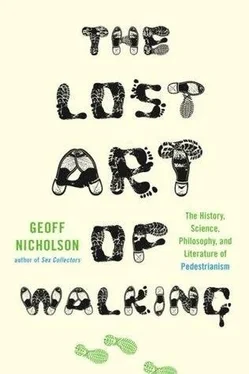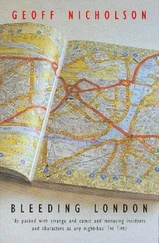This, evidently, was a joke — some of his staff couldn’t walk any farther than the watercooler. But, as a publicity stunt, a fifty-mile walk was duly set up for White House staffers. Robert Kennedy, then attorney general, did the walk wearing oxfords.
As is the nature with stunts, there were unforeseen consequences. Such was the Kennedy charisma and popularity that fifty-mile walks suddenly became a national craze. A lot of very ordinary, very unfit civilians took it into their heads to walk fifty miles, often in large groups. Boy Scout troops did it. School groups and seniors did it. An eight-year-old girl named Judy Aylwin failed to do it on her first attempt but succeeded in doing it two weeks later, accompanied by her brother.
The administration was understandably alarmed. A lot of money and energy was being put into the President’s Council on Physical Fitness and Sports to improve the nation’s health. It was clear that if people who had never walked seriously in their lives suddenly walked fifty miles the results were likely to be anything but healthful, and so attempts were made to distance the White House from the madness.
Like all crazes, this one, perhaps fortunately, wore off pretty quickly. America returned to its sedentary ways. But not before a man by the name of Jim McNutt, from San Carlos, California, demonstrated that he could do it faster than anybody else, having walked fifty miles in seven hours, fifty minutes. Was he an eccentric?
Was the filmmaker Werner Herzog demonstrating eccentricity in November 1974, when he heard that Lotte Eisner was seriously ill and likely to die and said to himself ‘This must not be’, that German cinema couldn’t do without her, and set off on a walk from Munich to Paris in the depths of winter, trudging through ice and snow, sleeping outdoors, experiencing pain in his ankle and in his left thigh ‘around the groin’, journeying ‘in full faith believing that she would stay alive if I came on foot’?
It certainly doesn’t sound like a conventional reason for walking, or a conventional way of keeping someone alive, but it worked. Lotte Eisner didn’t die until 1983. Wim Wenders’s 1984 movie Paris, Texas is dedicated to her. So maybe Herzog’s walk wasn’t eccentric at all.
Herzog is also the man who wrote, in a manifesto called the ‘Minnesota Declaration’, that ‘tourism is sin, and travel on foot virtue’. He currently lives in the Hollywood Hills, not a million miles from where I do, though we’ve yet to encounter each other while walking.
At much the same time that Herzog was making his journey to Paris, the English traveler and writer Sebastian Snow was walking the length of South America, 8,700 miles from Tierra del Fuego to the Panama Canal. It took him nineteen months. Fellow writer and explorer Eric Newby reckons this is one of the longest uninterrupted walks ever accomplished. The explorer Chris Bonington accompanied him for part of the trip and ‘was reduced to wreckage after a few days’.
Snow is one of my favorite walkers. He was an Englishman of the old school, droll, debonair, tough as granite, and an eccentric by any conventional standard. He was an old Etonian who (this is almost too good to be true) had broken his leg while playing football and had thereby avoided being drafted into the army for national service. They were worried about his ability to march.
Perhaps the greatest show of Snow’s resolve and toughness was his ability to turn down lifts from passing motorists, however hard the going got. Often his refusal caused incomprehension, alarm, and sometimes anger in the spurned drivers. In the Peruvian desert a ‘young and very animated’ Peruvian woman stopped her car and began chatting with him, complaining that desert driving is very monotonous.
‘Desert marching is no sinecure’, Snow replied, quick as a flash, but then he didn’t want it to be. ‘By some transcendental process’, he writes:
‘I seemed to take on the characteristics of a Shire (horse), my head lowered, resolute, I just plunked one foot in front of t’other, mentally munching nothingness.’
Snow’s rejections bring to mind John Francis, otherwise known as Planetwalker. In 1971, Francis saw a catastrophic oil spill in San Francisco Bay, and decided that from that moment he’d stop using motorized transport. It caused him certain problems, not least the loss of his job as manager of ‘a struggling avant-garde music group’ called Spectrum of Sight and Sound, but he obviously believed he’d done the right thing, and for the next five years he spread the word. This in itself caused more problems. Certain people said he’d adopted a holier-than-thou attitude and that the way he talked about walking was designed to make them feel bad. So Francis stopped talking. The blurb on his autobiography reads ‘22 years of walking, 17 years of silence’.
This sounds like pretty odd stuff, and Francis was clearly a man who couldn’t operate very successfully in the ‘ordinary’ world. But from his point of view, his actions weren’t eccentric, they were natural and inevitable. He didn’t do them in order to make people think he was a wild and crazy guy — he did them because he wanted to ‘make a difference’.
Sometimes it seems the world is packed with such people. One currently in the process of making life difficult for himself is Arthur Blessit, who is walking round the world carrying a forty-pound cross. When I last checked his website he’d walked 37,352 miles in 307 nations in 38 years. That distance is equivalent to circling the earth one and a half times. Elsewhere on the website there’s a calculation of how far Jesus walked in his lifetime: far enough to circle the globe precisely once.
And who can forget the two American Buddhist monks walking for peace who took a two-year, nine-month pilgrimage from Los Angeles to their home monastery in Ukiah, Oregon, an eight-hundred-mile trip in all, taking three steps forward, then making a full prostration, for the entire length of the journey. Peter Radford’s ‘unnamed Duke’ would have been impressed and hired them on the spot.
Another peace walker was Mildred Norman Ryder, known as Peace Pilgrim. In 1952 she became the first woman to hike the Appalachian Trail in one season, and then had a vision: ‘I saw, in my mind’s eye, myself walking along and wearing the garb of my mission…I saw a map of the United States with the large cities marked…as though someone had taken a colored crayon and marked a zigzag line across, coast to coast and border to border, from Los Angeles to New York City. I knew what I was to do. And that was a vision of my first year’s pilgrimage route in 1953!’
The garb of her mission consisted of ‘one pair of slacks and shorts, one blouse and sweater, a lightweight blanket, and two double plastic sheets, into which I sometimes stuffed leaves’. I had expected something more robelike.
Walking for peace may certainly strike you and me as futile and useless, but if a person believes it works, then it’s the most logical and rational thing in the world. To walk for a reason, any reason, however personal or obscure, is surely a mark of rationality. Money, art, self-knowledge, world peace, these are not eccentric motivations for walking — they’re damn good ones, regardless of whether or not they succeed. I find myself coming to the conclusion that perhaps the only truly eccentric walker is the one who walks for no reason whatsoever. However, I’m no longer sure if that’s even possible.
4. Nicholson’s London, Your London, Anybody’s London
Worst street to walk? The Rotherhithe Tunnel. Not really a street, but a pedestrian way (or euthanasia path). West India Avenue & Cabot Square (by Canary Wharf) would be right up there as an anti-street, high level surveillance, suspended liberties, drone crowds, comic book architecture.
Читать дальше












